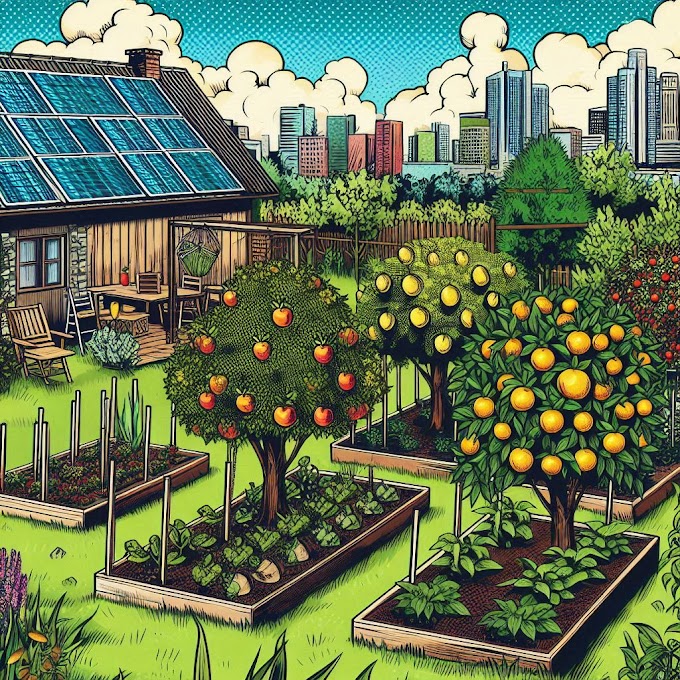Microgreens vs. Sprouting 101: What’s the Difference and Which is Better for You?
When it comes to survival gardening, health-conscious eating, or simply adding some fresh, nutritious greens to your diet, you’ve probably encountered two popular options: microgreens and sprouts. Both are packed with nutrients and are incredibly easy to grow, but they’re not quite the same. Understanding the key differences between microgreens and sprouting can help you make the best choice for your needs, whether you’re short on space, time, or soil.
Let’s break it down and explore the world of microgreens vs. sprouting!
What Are Microgreens?
Microgreens are young, edible plants harvested at an early stage of growth—usually when they have just sprouted their first true leaves. They come from a variety of vegetables, herbs, and seeds, and they’re grown in soil (or sometimes other mediums like hydroponics or paper towels).
Typical Microgreens:
Radish
Broccoli
Mustard
Pea shoots
Sunflower
Beet greens
Growth Time:
Microgreens typically take 7 to 21 days to grow, depending on the variety.
Nutritional Benefits:
Microgreens are packed with vitamins, minerals, antioxidants, and other nutrients, sometimes 40 times the concentration of their mature counterparts. For example, microgreens like broccoli are especially known for their high levels of vitamin C and sulforaphane.
How They’re Grown:
Microgreens are grown in soil or other growing mediums.
They require light to grow and develop their leaves.
They are typically harvested by cutting them above the soil when they are about 2–4 inches tall.
What Are Sprouts?
Sprouts are seeds that have been germinated and grown for a short period until the first leaves or shoots appear, but they are typically consumed before the leaves fully develop. Unlike microgreens, sprouts don’t require light to grow, and they are usually grown in water or wet environments. Sprouts include seeds like alfalfa, mung beans, and lentils.
Typical Sprouts:
Mung beans
Alfalfa
Radish
Lentils
Chickpeas
Growth Time:
Sprouts are typically ready in 3–7 days. They are harvested while they are still small and haven’t yet fully developed leaves.
Nutritional Benefits:
Like microgreens, sprouts are also loaded with enzymes, vitamins, and minerals. They are a powerhouse of nutrition, especially rich in fiber, antioxidants, and protein.
How They’re Grown:
Sprouts are usually grown in a jar, sprouting tray, or other containers filled with water.
They require no light to grow, only a warm, moist environment.
Rinse and drain the seeds several times a day to keep them hydrated and prevent mold growth.
Key Differences Between Microgreens and Sprouting
1. Growing Medium:
Microgreens are typically grown in soil (or other mediums like paper towels or hydroponics).
Sprouts are grown in water and do not need soil.
2. Growth Time:
Microgreens take longer to grow, usually 7 to 21 days.
Sprouts grow much quicker, often 3 to 7 days.
3. Nutritional Content:
Both microgreens and sprouts are highly nutritious, but microgreens tend to have more concentrated nutrients due to the growth process, sometimes providing up to 40 times the nutritional content of their mature counterparts.
Sprouts are excellent for fiber, protein, and enzymes, but are typically lower in calories and more digestible compared to microgreens.
4. Taste and Texture:
Microgreens usually have a crunchy texture and stronger flavors, such as spicy (radish) or earthy (beet).
Sprouts are typically crisp, tender, and have a mild, fresh flavor, with a slight nutty or peppery taste depending on the variety.
5. How They’re Used:
Microgreens are generally used as a garnish or added to salads, sandwiches, and wraps for added flavor and texture.
Sprouts are often added to salads, smoothies, wraps, or used as a garnish, but they’re also excellent on their own in soups or as a healthy snack.
6. Growing Space and Equipment:
Microgreens need soil (or alternative mediums) and usually require light, whether from the sun or artificial grow lights. They need a small tray or container to grow.
Sprouts can be grown in a jar or sprouting tray without the need for soil or light, making them incredibly space-efficient and easy to grow in small areas.
Which Is Better for You? Microgreens or Sprouting?
Both microgreens and sprouts have unique benefits, and the choice really depends on your needs, preferences, and available space. Here are a few considerations to help you decide:
Go for Microgreens If:
You want a larger variety of flavors and textures in your diet, ranging from spicy (radish) to nutty (sunflower).
You have more time for growing (7 to 21 days).
You want to grow something that requires soil or hydroponic methods.
You need more concentrated nutrients and antioxidants from your greens.
Go for Sprouts If:
You need quick, fast-growing food (ready in just 3–7 days).
You have limited space or live in a small apartment.
You prefer low-maintenance growth—no soil, light, or complex systems required.
You want easy-to-digest food with a gentle flavor.
The Bottom Line
Both microgreens and sprouts are excellent, nutritious, and easy-to-grow options, making them perfect for survival gardening or anyone looking to grow food quickly and sustainably.
Microgreens provide a wider variety of flavors, colors, and textures, plus more concentrated nutrients, but they take longer to grow and require soil.
Sprouts are faster to grow, easier to maintain, and require less space, but they offer a more limited variety and tend to have a milder flavor.
Both are great additions to any survival garden or urban farming project. Why not grow both and enjoy the benefits of both worlds?












